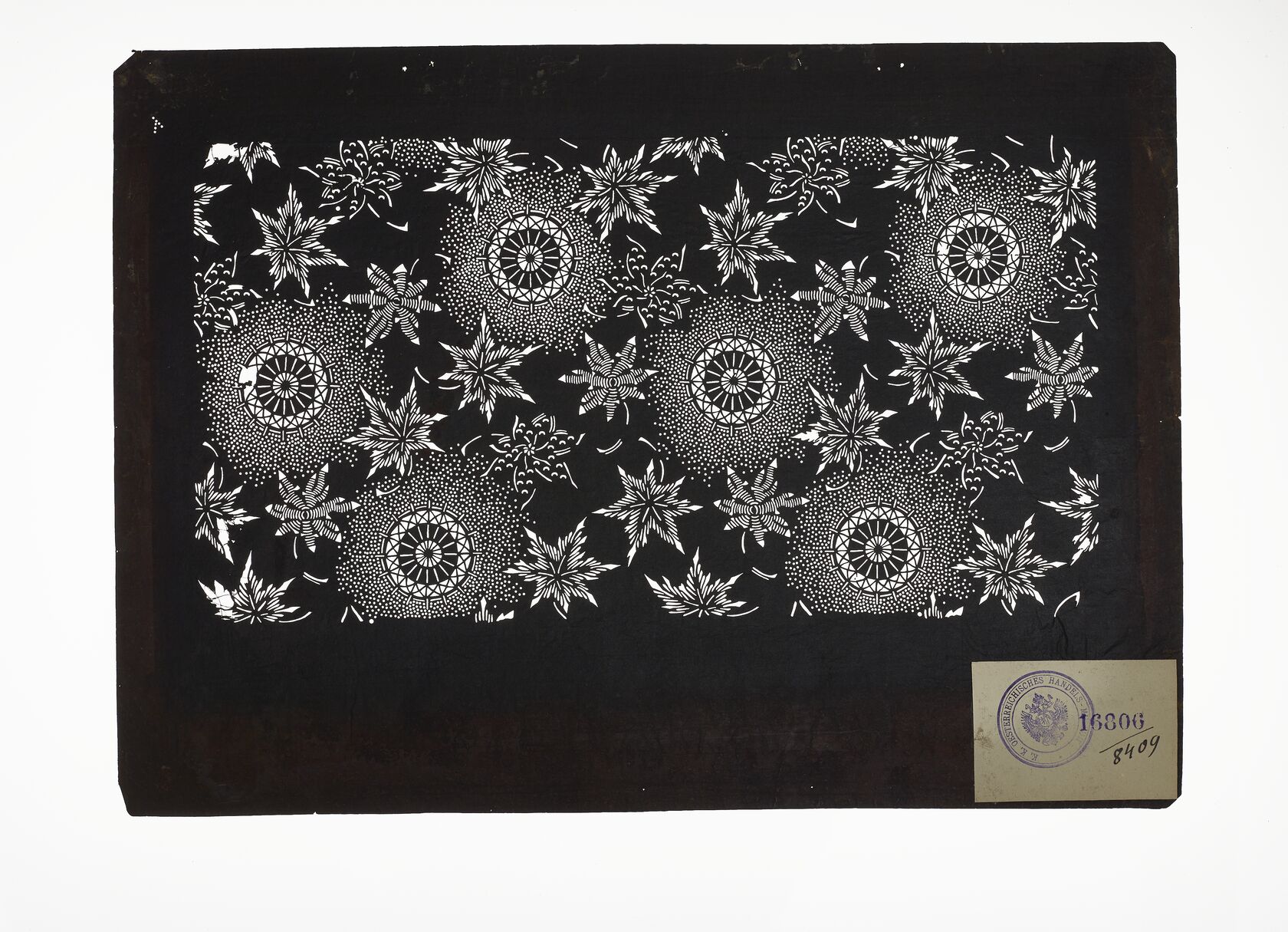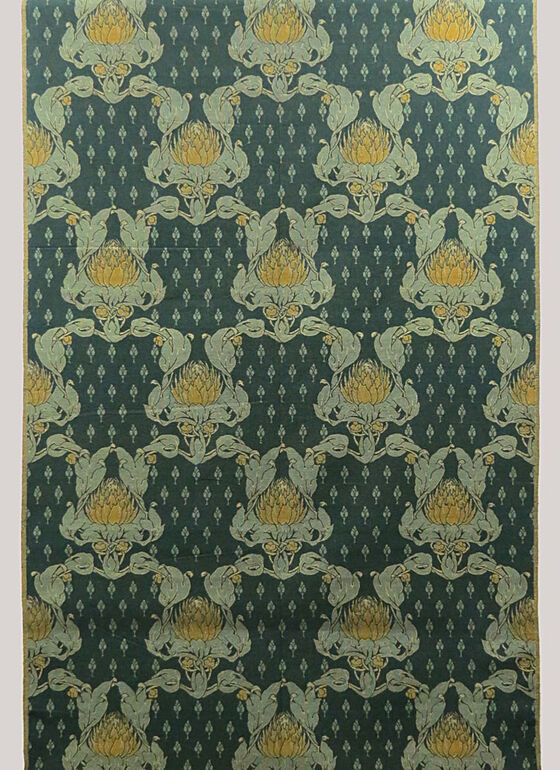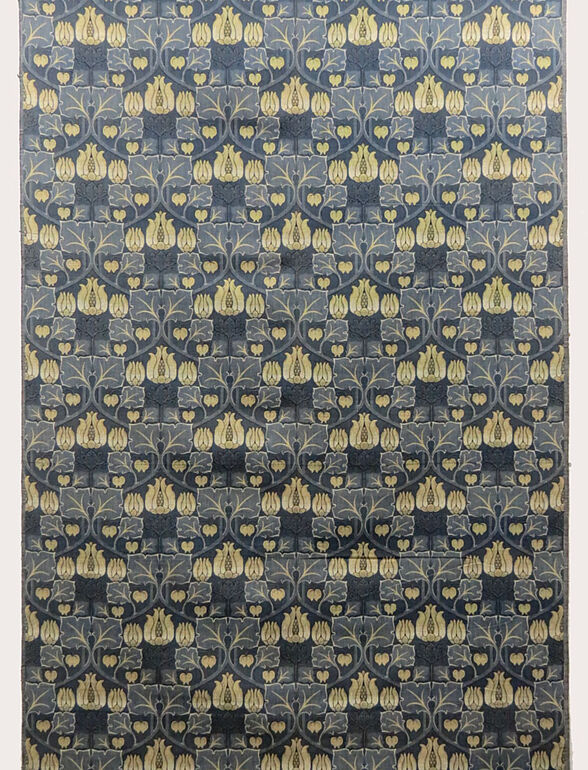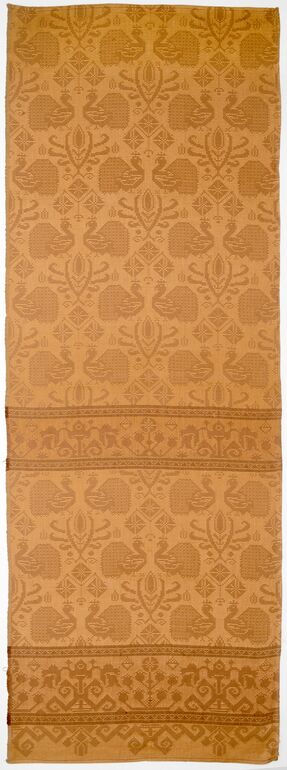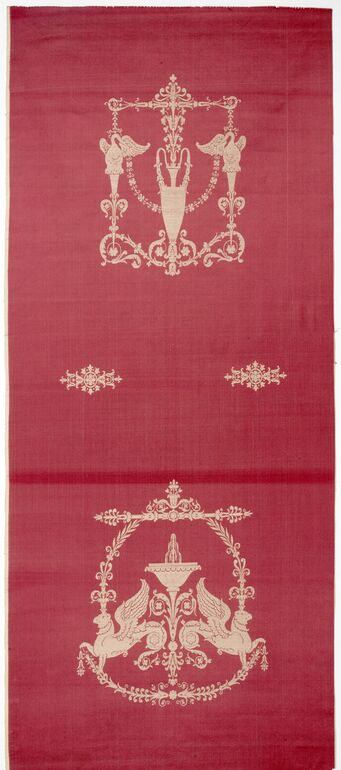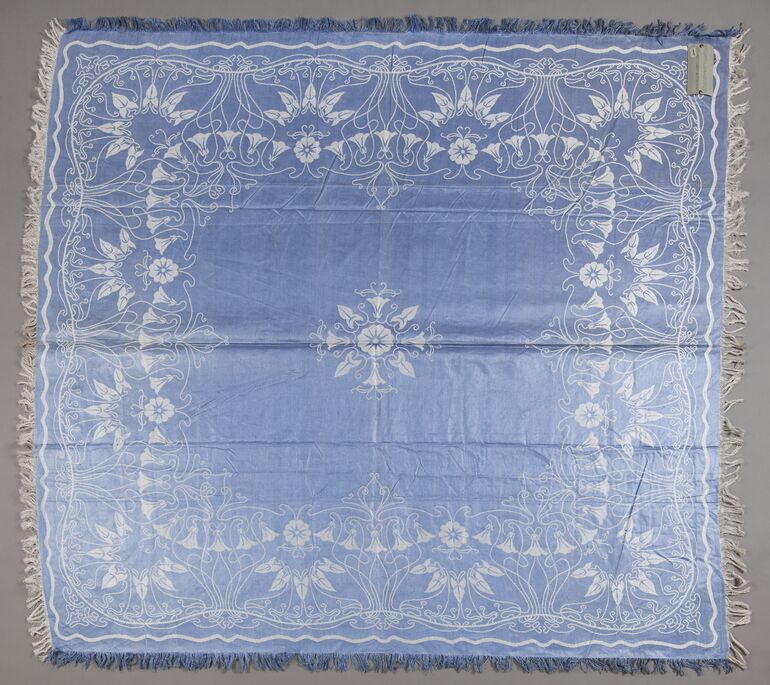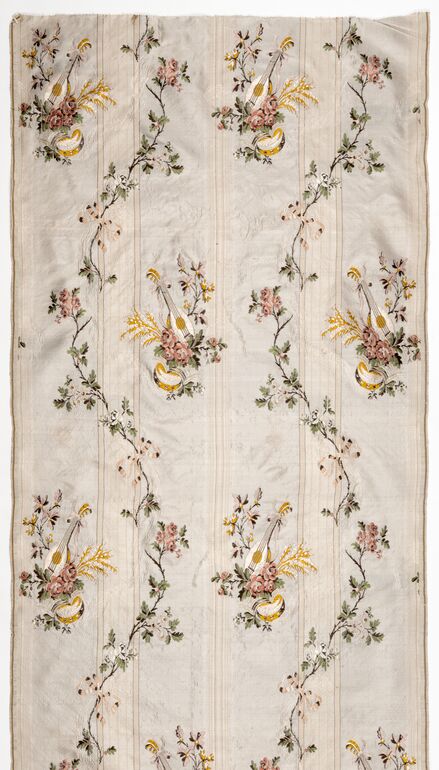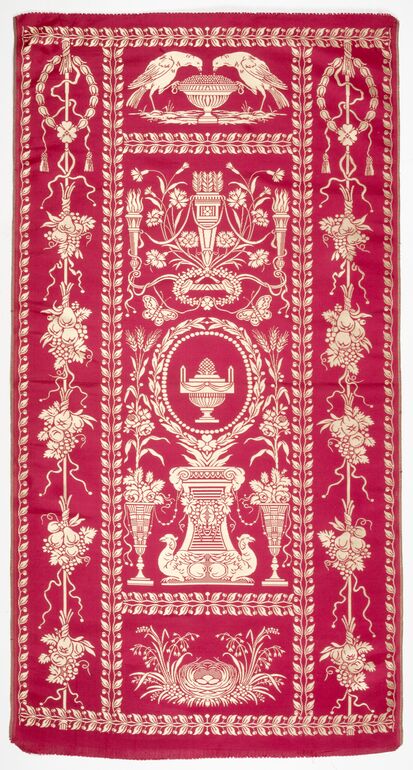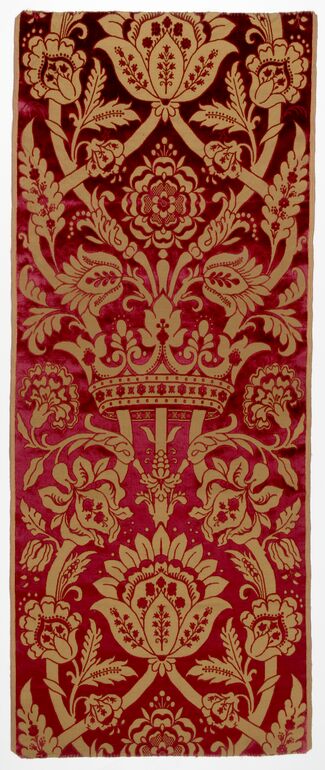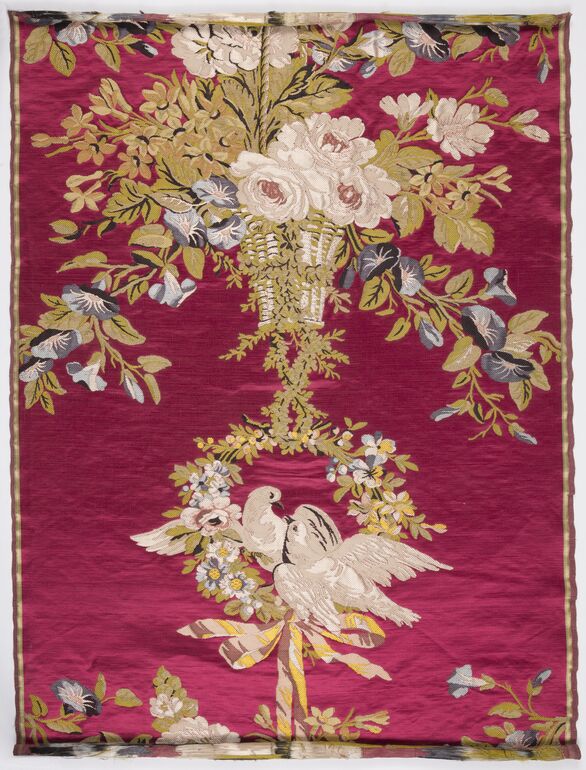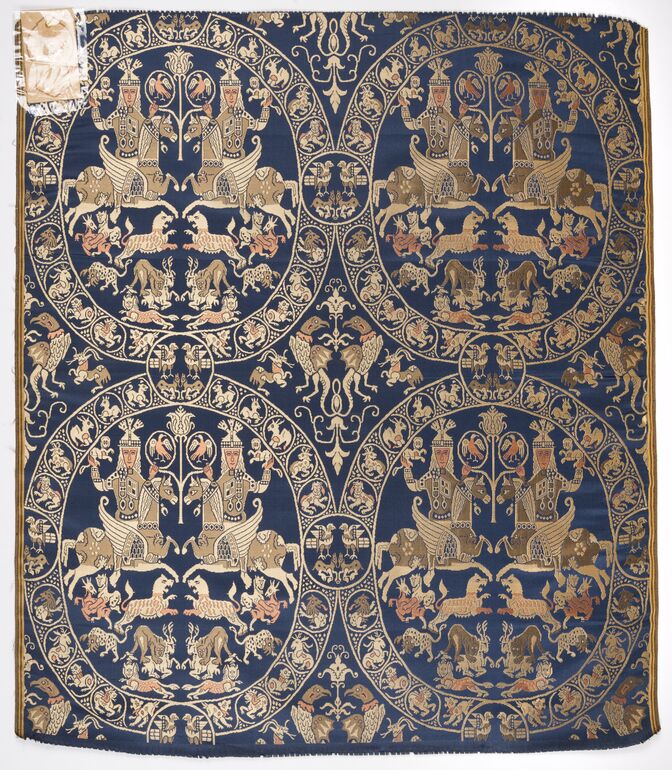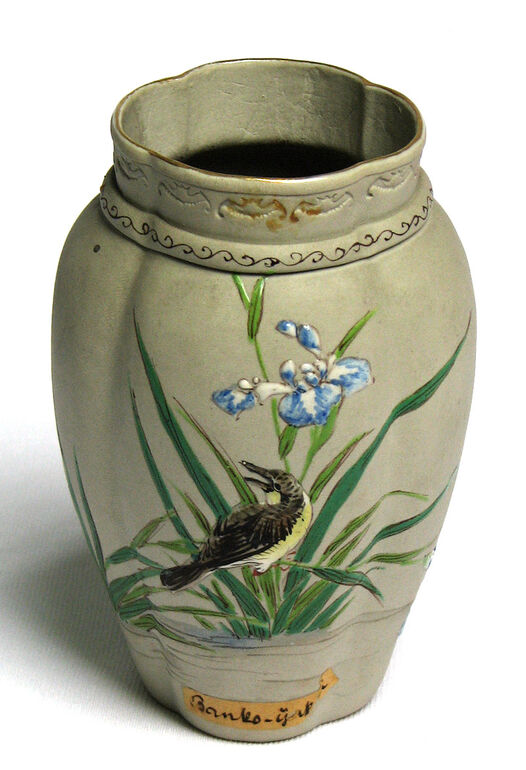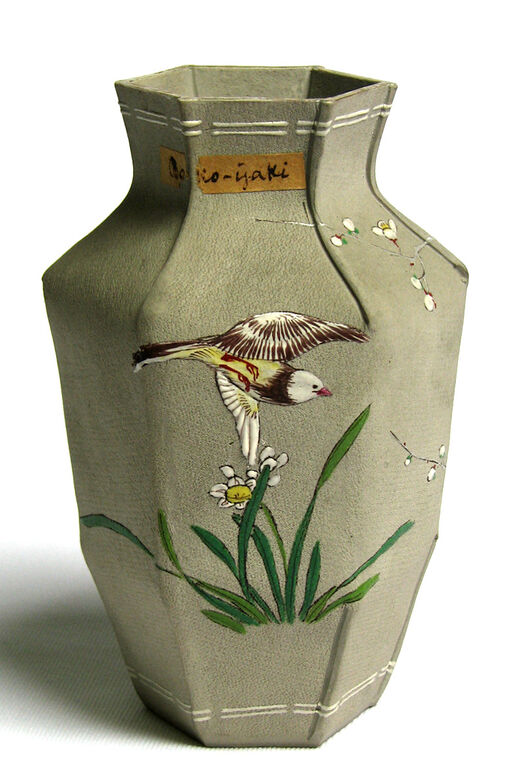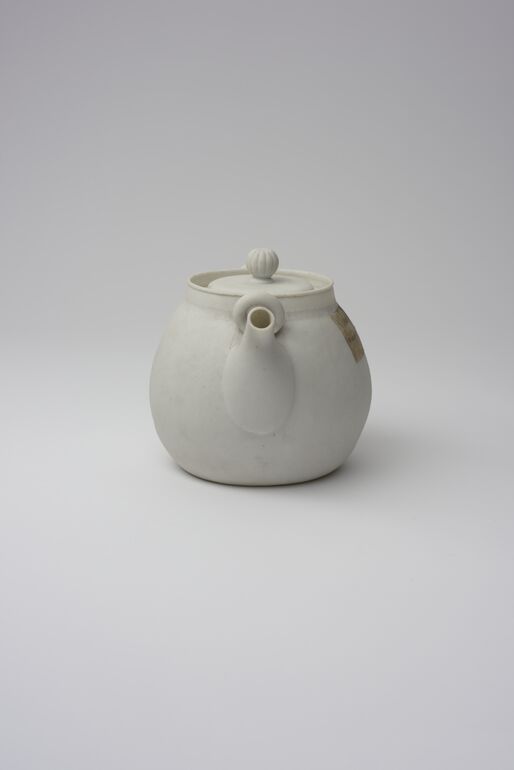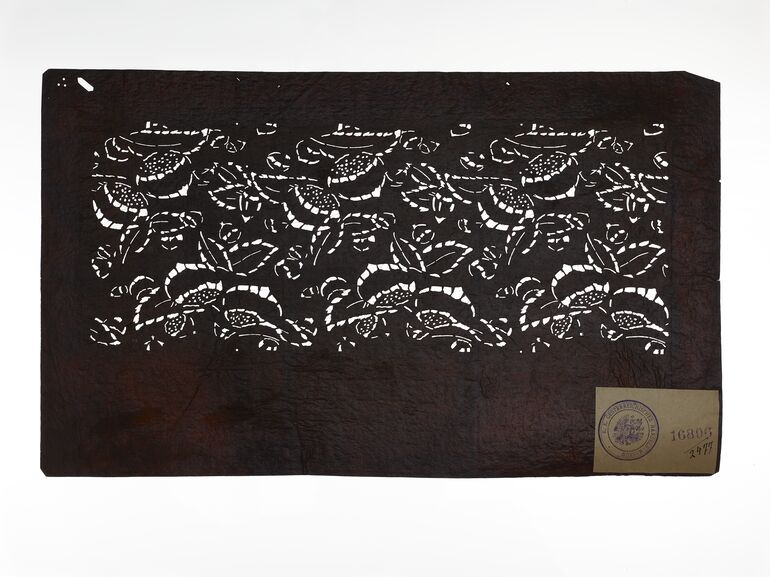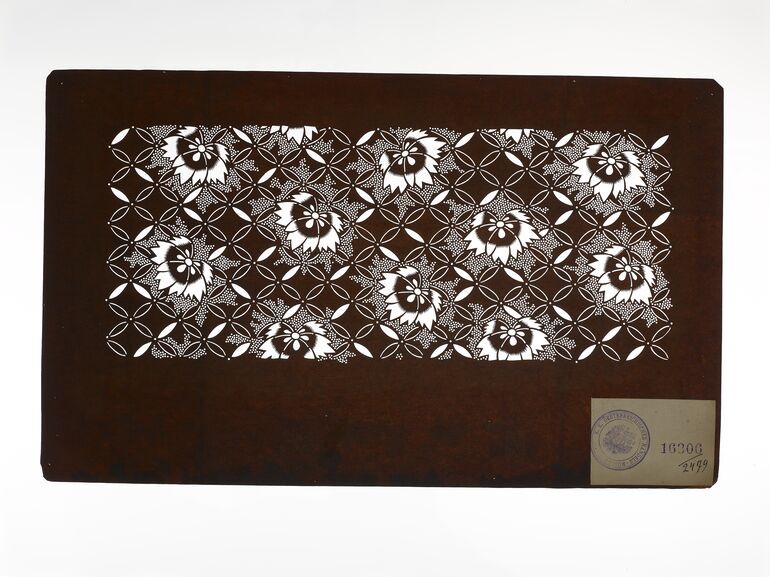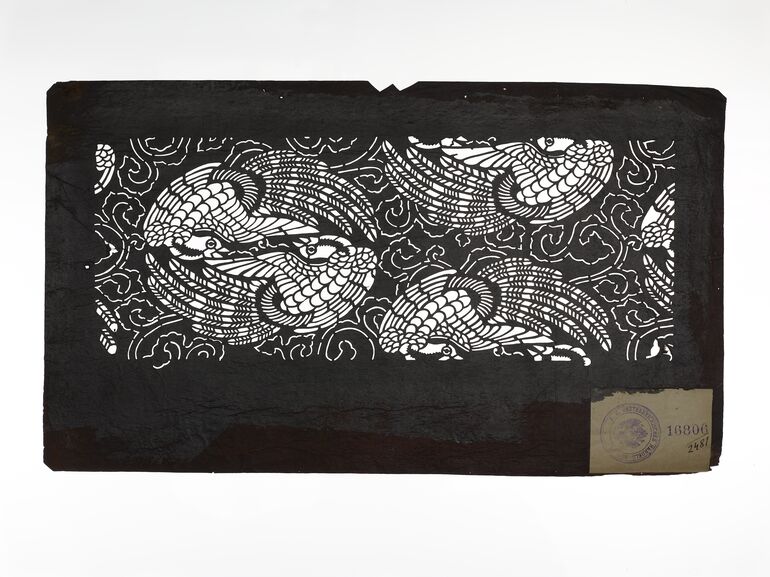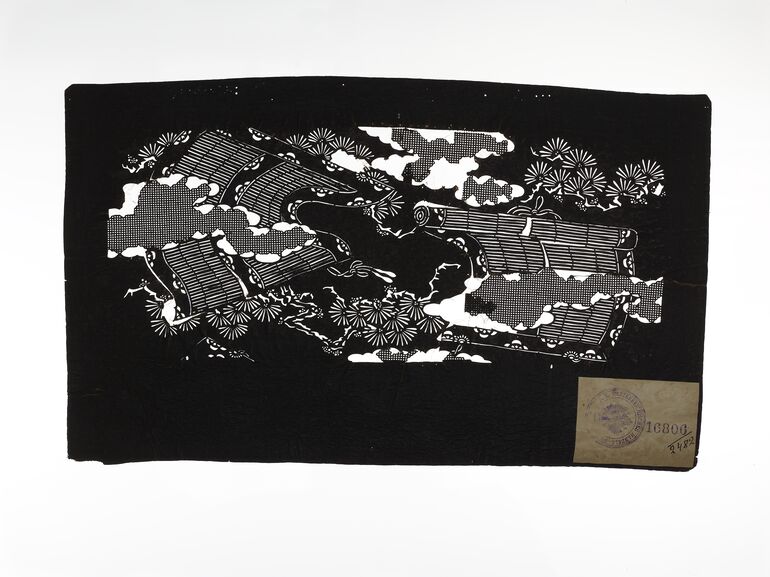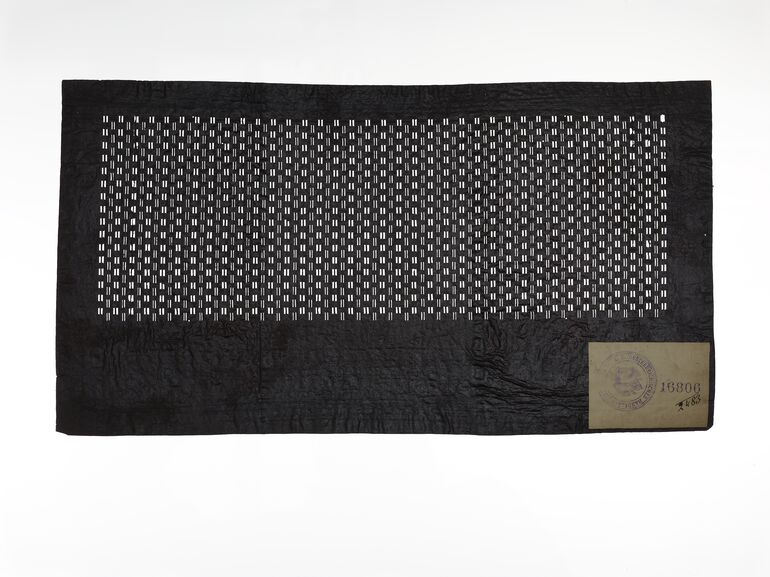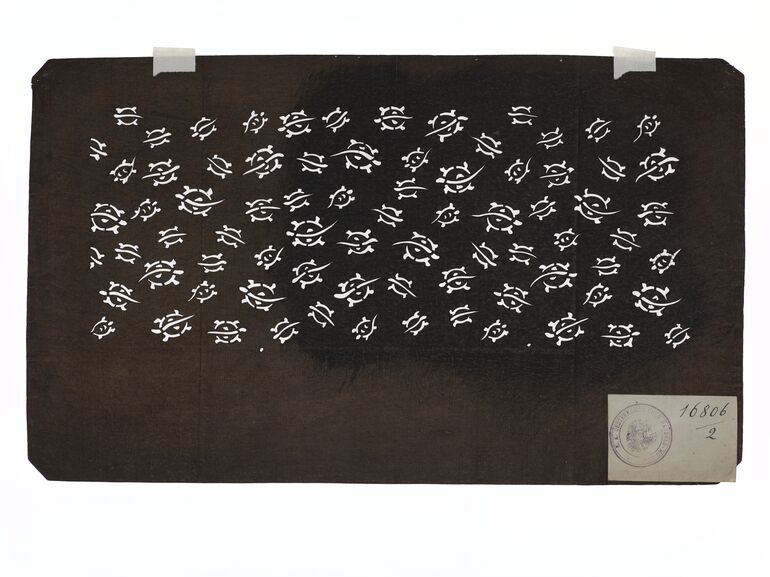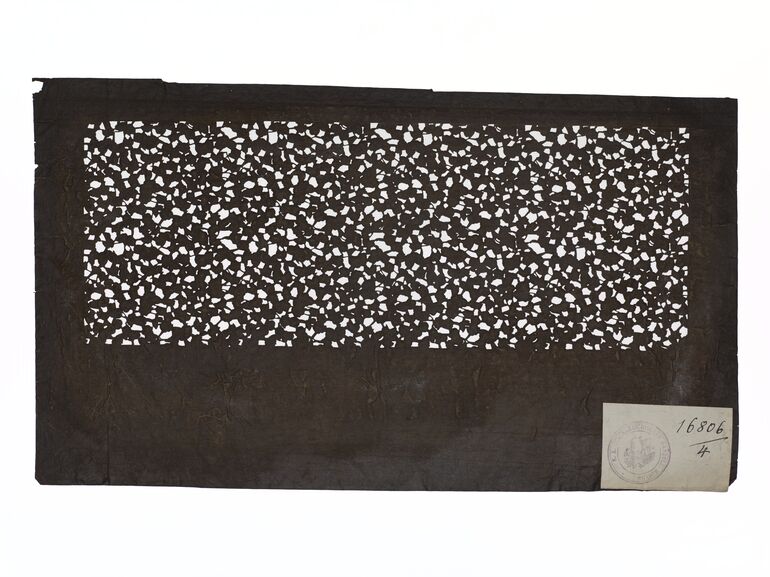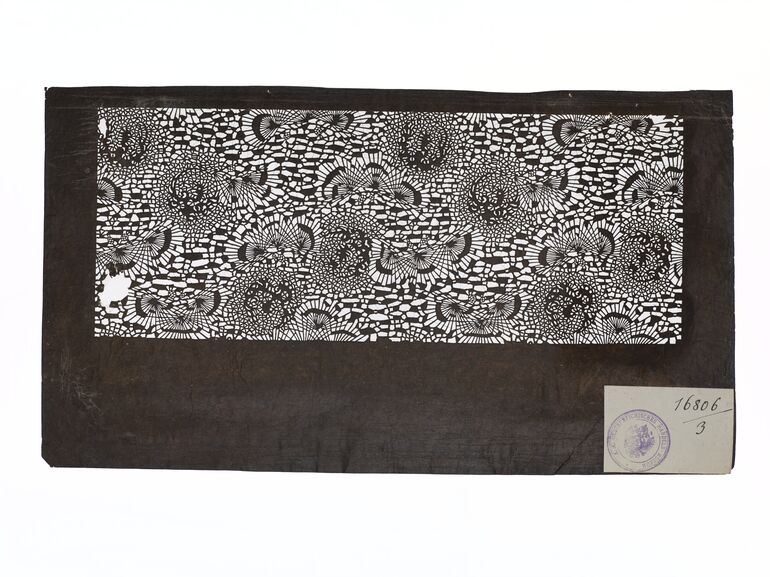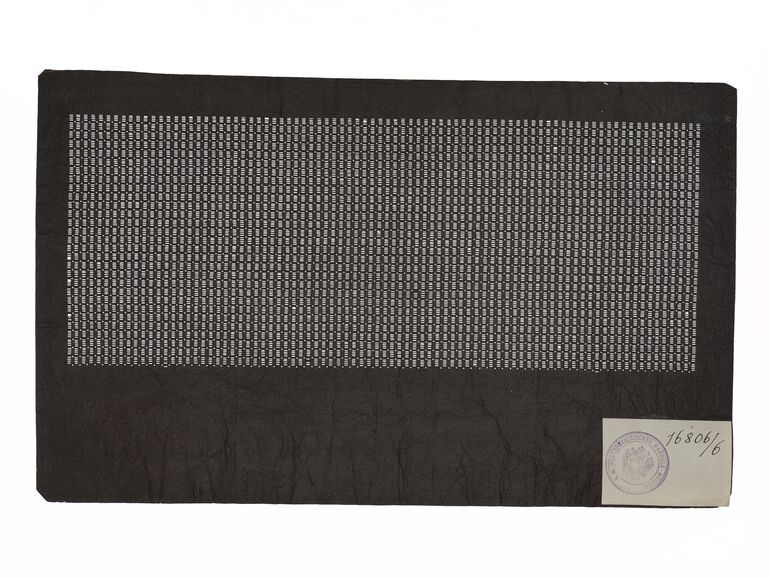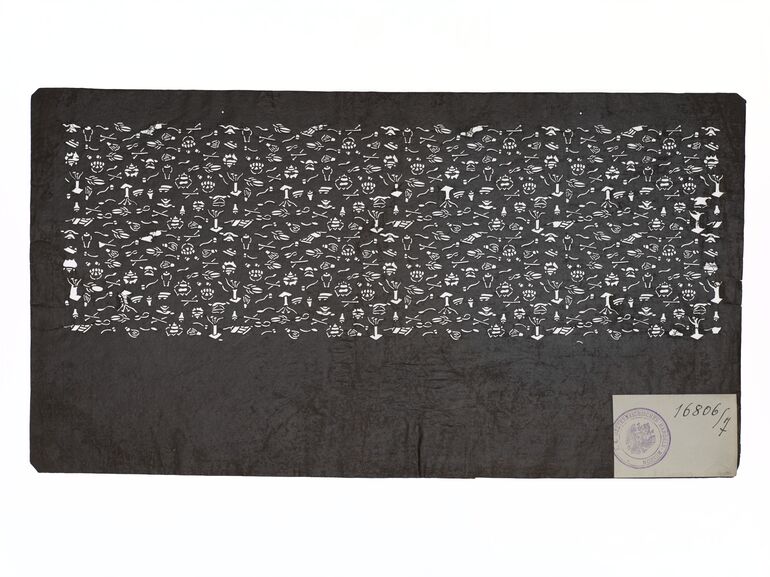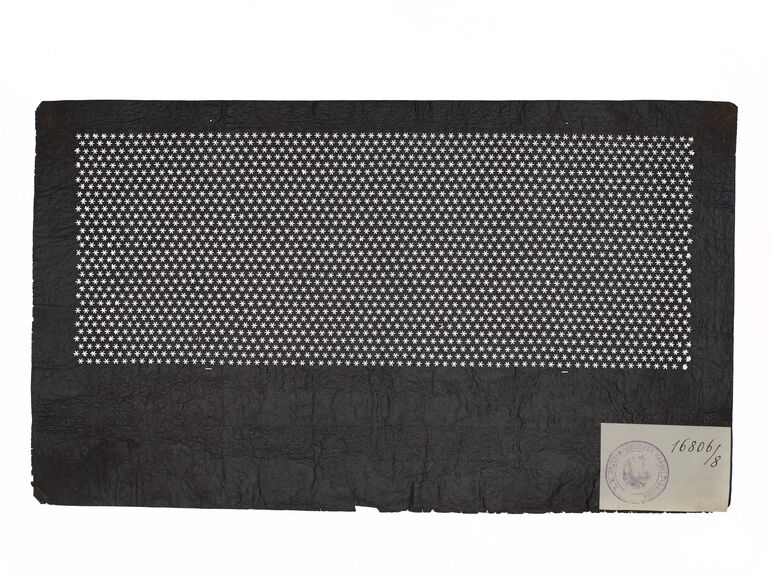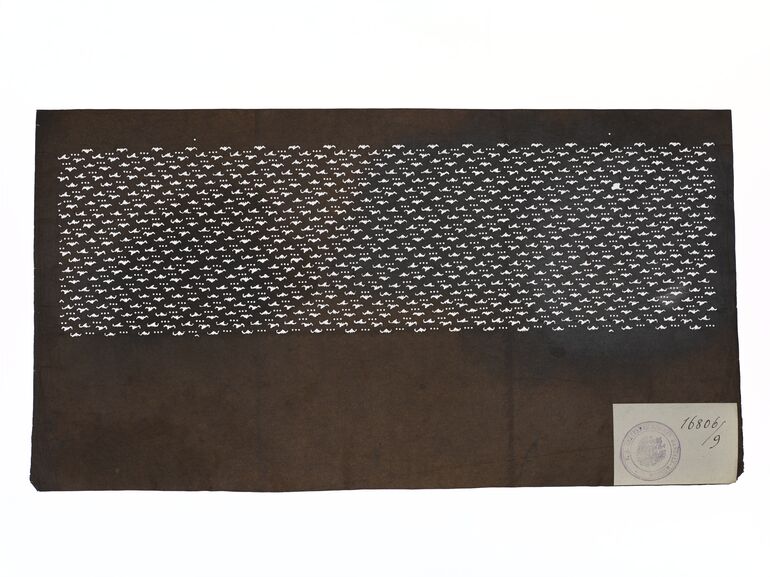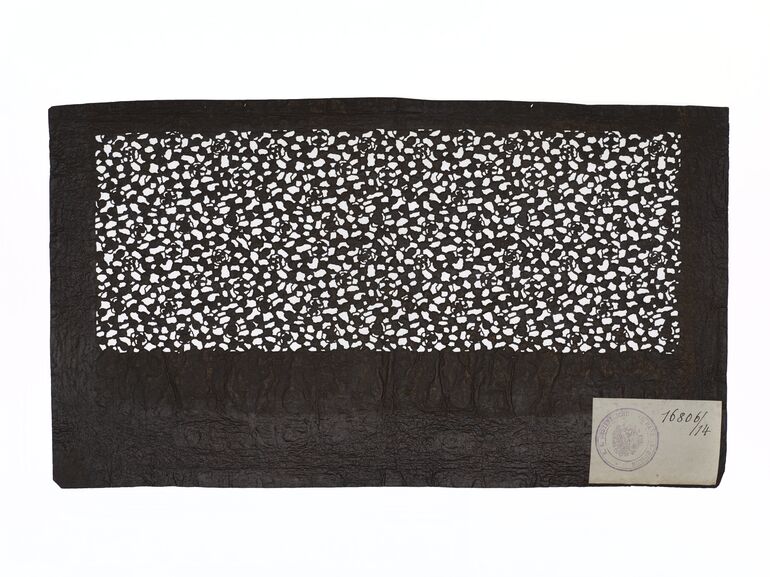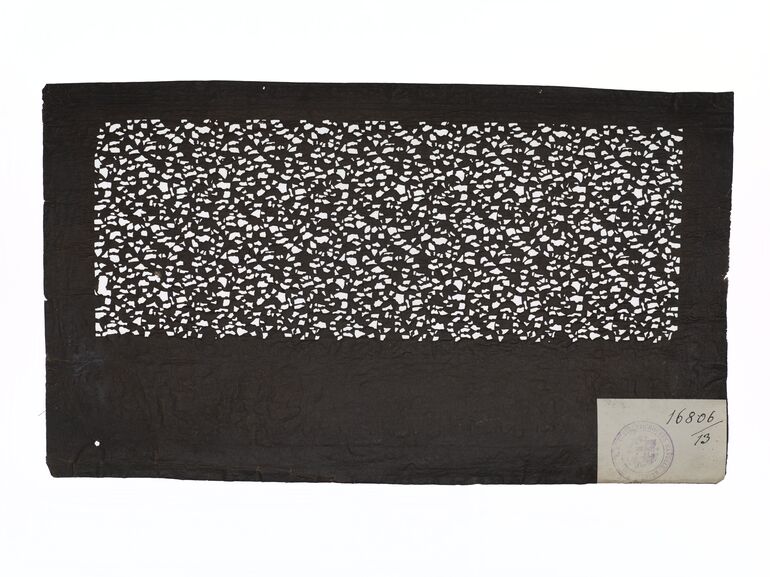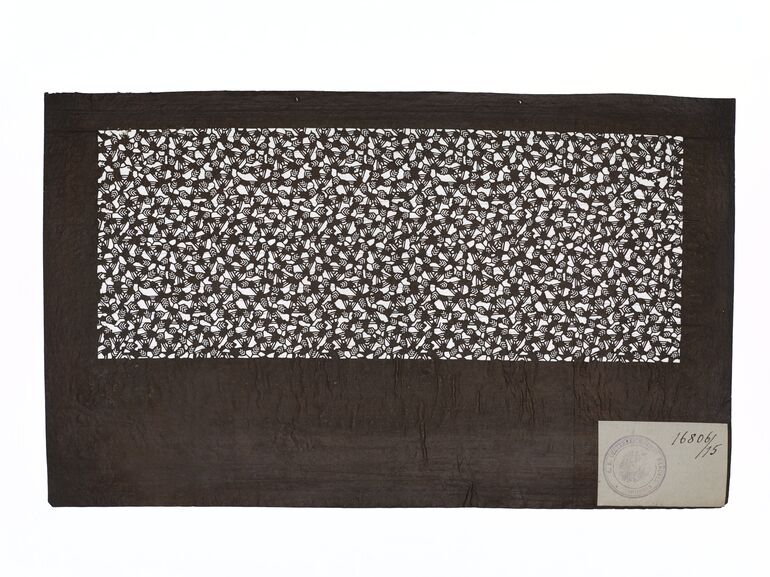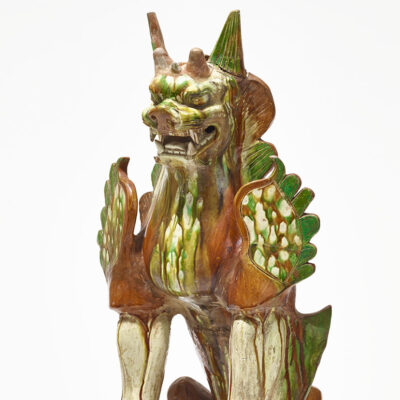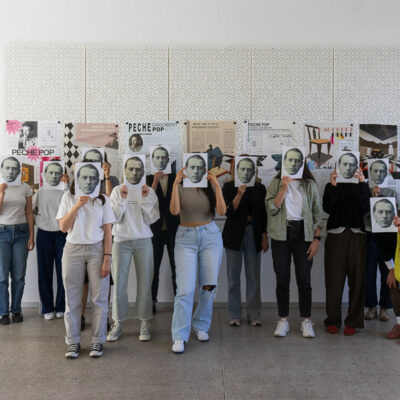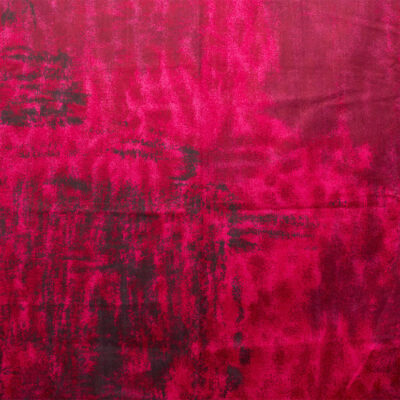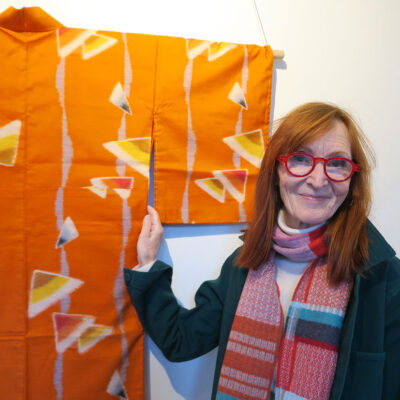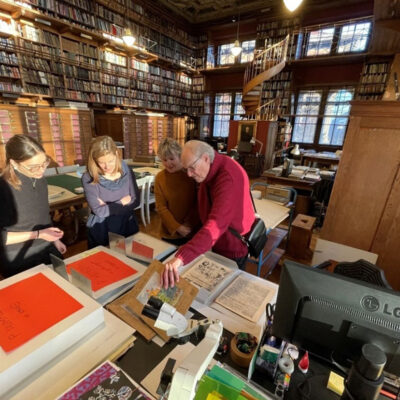Title
- Part of a set. Plant pattern (shokubutsu monyō 植物文様), surface pattern (waritsuke monyō 割付文様), scattered pattern (chirashi monyō 散らし文様): maple leaves, some with tie-dye (shibori 絞り) pattern and some with parts of kanoko shibori 鹿の子絞り, and cjrysanthemums on arare あられ (hailstones; dots)
Collection
Period | Style | School
Material | Technique
Inventory number
- OR 3925-8409
Acquisition
- assumption , 1907
Department
- Asia Collection
Description
-
"Dyed ground" (jizomari 地染), "main stencil" (omogata 主型).
The maple leaf (kaede 楓, also: momiji 紅葉) is considered a symbol of a long and successful life because it changes color depending on the season. Especially in autumn, the foliage shines in the most beautiful colors. Maple leaves are already sung about in the oldest poetry (Man'yōshū 万葉集, Kokin Wakashū 古今和歌集), and maple leaf motifs on robes are described in the Heian period (Makura-no Sōshi 枕草子, Eiga Monogatari 栄花物語). Even banquets "to admire discolored maple leaves" are said to have been held from the second half of the Heian period onwards.
The kanoko 鹿の子 pattern similizes the white spots of deer calf (ka 鹿 = deer; ko 子 = kid).
-
stencil (katagami 型紙), Part of a set. Plant pattern (shokubutsu monyō 植物文様), surface pattern (waritsuke monyō 割付文様), scattered pattern (chirashi monyō 散らし文様): maple leaves, some with tie-dye (shibori 絞り) pattern and some with parts of kanoko shibori 鹿の子絞り, and cjrysanthemums on arare あられ (hailstones; dots), Anonym, MAK Inv.nr. OR 3925-8409
-
https://sammlung.mak.at/en/collect/part-of-a-set-plant-pattern-shokubutsu-monyo-植物文様-surface-pattern-waritsuke-monyo-割付文様-scattered-pattern-chirashi-monyo_358981
Last update
- 14.06.2025
